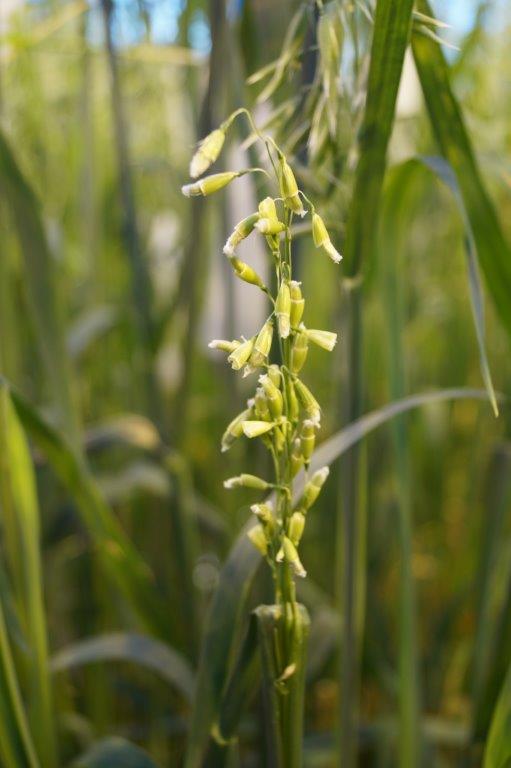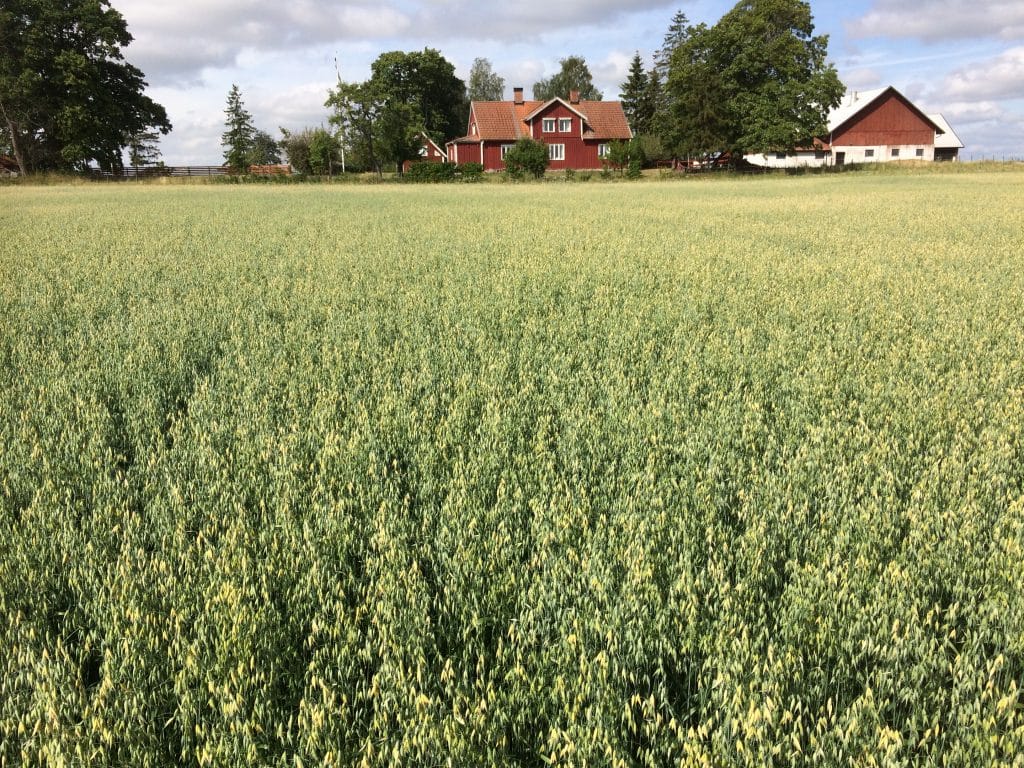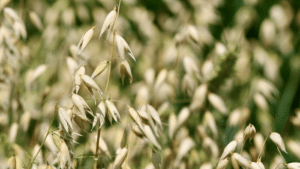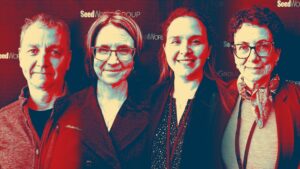Most will agree the modern-day credo for agriculture is to produce more product from less land, while at the same time using fewer finite resources. And in many countries, land use competition is intense and crops such as oats have to compete in that scenario. As a result, crop diversity means little in a market-driven economy. As the agrochemical investors concentrate on volume or high value end markets, oats, as a minor cereal and without critical mass, are particularly challenged. Scientists, researchers and politicians all too often focus on the ubiquitous crops, ignoring the hidden treasures and potentials of others. European Seed looks at the unique properties and the potential that oats possess. It is a multifunctional crop that is used as a healthy human food, but also as high-quality animal feed or a grain with industrial and pharma applications.
Oats are unique in that compositionally they do not contain gluten and have a soluble fibre, beta-glucan, which is increasingly recognized for its health delivering properties, being covered by an EU health claim for reducing the risk of coronary heart disease. In most oat breeding companies, increasing the levels of beta-glucan in both spring and winter husked oats whilst improving agronomic performance is a current quality breeding target. The health claim is further underlined by the fact that oats were elected as the “Medicinal plant of the year 2017” in Germany, a title, which is only given to crops with scientifically evidenced clinical effects.
Interestingly enough, multiple studies have shown that people eating oats experience a so-called satiety effect, reserved for foods with an increased capacity to inhibit the appetite in the period after consumption. This is an area of considerable public interest, especially in a society where obesity is contributing to numerous health problems. Understanding the mechanisms involved in this satiety process is an important step in identifying traits associated with this effect and how selection for these traits might be incorporated into the oat breeding programme.
Oat is in Europe mainly used for feed. However, driven by health claims and greater awareness of the public for their health, oat for human consumption has attracted more attention; supermarket shelves filled with oat flakes, bars, mueslis, as well as the gluten-free market. Oat fits well within the framework of sustainability, both for its modest needs in terms of nitrogen and fungicides as well for its positive effects on soil condition. However, the oat acreage EU-wide does not seem to increase substantially up to now.
European Seed sat down with Ingeborg Westerdijk, oat breeder at Wiersum Plant Breeding and Steffen Beuch, oat breeder/head of breeding station at Nordsaat Saatzucht GmbH to learn more about this humble crop.
OATS ARE A HUMBLE CROP
“Our company has been involved in oat breeding for almost a century, as were many other companies in the years past,” says Westerdijk. “With a decreasing European oat acreage, many of these breeding programs were discontinued, resulting in a relatively small overall European breeding effort nowadays, when compared to wheat and barley. Therefore, one cannot expect the yield gain to keep pace with the yield increase in the main cereal crops.”
Westerdijk explains that since less breeders are involved – often with, on average – smaller programs and developing less varieties, the life cycle of oat varieties tends to be much longer. “At least this is a positive side-effect on the revenues for the breeder.”
INCENTIVES TO BREEDING
The best incentive to increase investments in oat breeding would be a consistent increase of market demand, both for feed and food. Not only the earlier mentioned aspects for human consumption, but also a higher appreciation of the nutritional value of oat for animal husbandry and there is considerable scope to diversify the oat crop as either a forage or biomass crop.
“At the end however, it is important that it is economically attractive for the farmer to grow an oat crop,” says Westerdijk. “Ignorance breeds contempt; many of today’s farmers are not familiar anymore with this traditional crop and tend to see oats as a crop for marginal soils only, instead of a fully-fledged field crop. Managed well, oat can easily yield 9-10 t/ha under optimal growing conditions.”
[tweetshare tweet=”Managed well, oat can easily yield 9-10 t/ha under optimal growing conditions.” username=”EuropeanSeed”]
Beuch says yield and disease resistances are paramount breeding targets especially as there are a reducing number of effective agrochemicals.
“Some quality parameters are very important as well,” Beuch explains. “Most important is specific weight or hectolitre weight which still dominates the oat trade and the monetary value of oats. Additionally, kernel content, hullability and screenings are important traits for oat milling. All these characters are highly heritable and can be influenced positively by choosing the right oat variety.”
Westerdijk states Wiersum Plant breeding focusses on breeding varieties with strong agronomic features: high and stable grain yields, good resistance against some important leaf diseases and stiff straw.
“Grain quality is getting much attention by selecting for high specific yield, high kernel content and good screenings from an early stage onwards,” says Westerdijk. “We recently – in the UK – recommended spring oat variety WPB Elyann as an example of a successful combination of excellent agronomics and unique grain quality, making it very interesting for the milling industry.”
The concept of Wiersum’s breeding program is to develop many young lines, screen them for yield potential, thus allowing a wide range of selected lines to enter the European network of yield trials. These trials are accommodated by their partners/representatives abroad. By screening for yield and identifying too poor yielding lines only, potentially high yielding lines for different environments are kept on board.
“Acting this way, we can identify lines with stable, high overall yields, but also lines that are better equipped for a specific environment,” explains Westerdijk. “Not only the genotype x environment interaction plays a role, the requirements per country can be very different too. There may be a prevalence for white, yellow or black oat, or for high specific weight over yield.”
Breeding targets
Beuch explains that despite the lack of investment, new breeding technologies are available to oat breeders. “Molecular markers are available since many years and SNP chips come from public breeders of the Northern American oat breeding,” he says, and adding that different European oat breeders will introduce genomic selection in the next few years.
“A European oat genome project is willing to clarify the complete oat genome the next years. Tissue culture techniques are requested by breeders and scientists, but still take some time before an economic use will be possible in oats too.
In the early generations, before yield testing, the material is selected to meet requirements on disease resistance (mainly mildew, Septoria and crown rust), straw length and – strength, panicle morphology and earliness of heading and maturity. Westerdijk says additional screening for grain quality takes place in the winter months before yield screening in order to delete the lines that do not meet minimal requirements.
“Since determination of the husk content is a very laborious job, screening is done by using Near Infrared Transmittance (NIT). During the yield testing phase, grain quality is carefully monitored on the harvest products in several countries/locations. Then NIT is not precise enough and husk content is measured by hand.”
In terms of their breeding targets, Beuch says Nordsaat‘s oat variety breeding is directed to the whole European region between the Atlantic coast and the Ural Mountains.
“Consequently, we have a strong eye on a high ecological adaptability as well as yield stability in oat varieties. Due to the comparable high water demand of oats and its spring sown character this trait is not easy to get.”
He adds that up until now, it was recognized that the interest of the European oat milling industry in special high ß-Glucan oat varieties is still underdeveloped. “It means that the return of investment of breeders into special trait oat varieties is not guaranteed. Nevertheless, interest seems to grow. One possible solution could be the introduction of a kind of oat contract breeding which shares the risk of investment between different partners inside the oat supply chain.”
Plant Health
Although oats have a high leaf mass and will not suffer badly from leaf diseases, Westerdijk says a lot of attention is paid to leaf health, especially in early generations. Despite the fact the greenhouse is involved to speed up the process, it takes roughly seven years from the first cross to entering a candidate variety in official trials in any country and another three to four years to get it listed. “Starting off with over one hundred crosses yearly, many thousands of head rows, mini plots and hundreds of yield plots, only few varieties get listed and commercialized after approximately 10 years,” explains Westerdijk.
Beuch concurs, stating that breeding a new oat variety costs between 1.5 and 2.0 Mio. € and takes 10 to 12 years.
[tweetshare tweet=”Breeding a new oat variety costs between 1.5 and 2.0 Mio. € and takes 10 to 12 years. ” username=”EuropeanSeed”]
According to Beuch, oat leaf diseases like mildew, crown rust, BYDV, Helminthosporium and Septoria are most important. “Additionally, meanwhile we work quite intensively to create a better Fusarium tolerance in oat varieties. This trait became very important the last years all over the European oat growing regions. Mycotoxins like DON and T2/HT2 are in the focus of the oat millers especially. Smut could be become more important again the next years if European organic oat growing will further increase and usage of conventional oat seed will be forbidden in the organic sector.”
Development and Variety
Running a pre-breeding program parallel to the development of commercial varieties takes quite some efforts, while efficient breeding for the best commercial varieties often excludes the direct use of primitive accessions or landraces, according to Westerdijk. Since varietal development in oat is not as extensive as in wheat f.i. the number of (new) commercial varieties is limited and so is their use as genetic resource. “Trying to make use of several sources of germplasm, and the fact that the hexaploid crop can exploit a lot of genetic information, there is still a continuous improvement of the current selection criteria possible. However, if ‘new’ criteria will be incorporated, efforts to obtain new germplasm will be necessary.”
Creating diversity for growers and customers is of course very important. The primary sources of diversity – mainly commercial varieties, but also landraces and other species – is an important component of breeding oats.
“Both sources are very important to us,” says Beuch. “We use all available germplasm to do a lot of crosses which are not directed to create new varieties in any case. We feel that it is necessary because there is not such a high number of other oat breeders left in Europe. Additionally, a regular sustainable pre-breeding does not exist in the European oat breeding.”
He says Nordsaat prefers to follow the rules of the IT on genetic resources, also in oat breeding. “The consequent introduction of the Nagoya protocol by the European Commission is a big risk to the [oat=> plant] breeders and requires a high input to avoid trouble and mistakes. Additionally, we see the increase of patents on natural traits rising also in oats, which will further limit the available germplasm to breeders.” He believes the European patent authority is strongly requested to ban all those patents in the future to keep our open source oat breeding alive.
Westerdijk states the new regulations on access and benefit sharing have not noticeably influenced the availability of germplasm, but it does affect the awareness and better care to use MTA’s when foreign germplasm is incorporated.

(Wiersum)
Oats as Animal Feed
According to the European Commission, nearly two-thirds of EU’s cereals are used for animal feed. While traditionally used to feed horses, oats are now part of livestock feed for chickens and pigs, as well as cattle and sheep. Oats are indeed a high valuable component in regards to animal feed.
Beuch says the main use of oats in Europe is indeed for feed grain.
“Usage differs between single countries with main usage for human consumption i.e. in the UK and Germany,” Beuch explains. “Change in use is on the run from feed to food. Nevertheless, the biggest oat growing countries Poland, Spain, Finland and Sweden still prefer to grow feed oats. This development is in accordance to other global oat growing regions like Australia or Northern America. Some global regions (Southern America, Northern Africa, Nepal region) grow oats as green manure, which is not common in Europe.”
According to a Senova report, oats are also recognised as a high value animal feed. The report states that considerable progress has been made in the development of high yielding high oil naked oat varieties that have a good oil and protein content with a good distribution of the essential amino acids that are particularly suited for inclusion in poultry rations. “We have demonstrated the high energy value of naked oats with oil content of 15-16 per cent and are now incorporating this trait into oat varieties more appropriate for ruminants” say Dr. Athole Marshall and Dr. Sandy Cowan, of IBERS, Aberystwyth University in the UK. The report adds the potential for oats in ruminant diets as a safe traceable feed source that can be grown ‘on-farm’, with the added benefit of reducing greenhouse gas emissions, is an exciting prospect.
Oats and the Future
Beuch says there is a clear lack of professional handling of oats compared to other crops in the agricultural markets and . Keeping in mind the clear increase of oat use in the human food sector, there is a big need for better understanding and engagement of all partners along the oat supply chain. “Currently the oat lobby is weak and there is a need to encourage better engagement. Additionally, the European administration is requested to create better political guidelines for investment into breeding of small market cereals like oats. European public breeding science suffers from the lack of funding into oat breeding research and, consequently, reduces activities or even shows no interest in the crop.”
He adds the biggest challenge is the creation of the balance between the available finances for the breeding and the need for the necessary breeding input having a critical mass to be successful.
“Nordsaat is also acting as farmer and has close, continuous contact to practical oat growing since its foundation,” Beuch says. “It is our biggest strength to interact with the European oat farmers. Our marketing organization, the Saaten-Union, is well known all over Europe as a trustable brand with high reputation.”
OATS SWOT ANALYSIS
Despite the dwindling global area of oats, opportunities abound for new markets in the human food and animal feed sectors. This was one of the conclusions of a new report “Oats SWOT Analysis” which is the compilation of over sixty international contributors and was edited and produced by Christopher Green of Oat Innovations.
“Contributions came from individuals across the global oat supply chain including breeders, agronomists, growers, millers and food companies and this provides a great insight to the status of the crop and its prospects” said Chris Green. “Whilst there is acceptance that the area may continue to decline, the health delivering properties of oats are unique and cannot be directly substituted by other cereals”. “The oat grain is the most nutritious of all cereals and should be the basis for humanitarian food aid programmes” added Chris.
The loss of tonnage going into animal feeds is the largest contributing factor to the decline in acreage. Set against this is the opportunity to contract grow and produce oats for specific value-added markets and this should translate into new markets for the hulless or naked oat. Added to this, the consumers and food manufacturers envisaged innovative new oat products aimed at the health-conscious market including the diabetic and gluten free sectors. “Threats to oats are there to be mitigated and the opportunities grasped and exploited” concluded Chris Green.
Copies of the “Oats SWOT Analysis” are available for free at e mail chris@oatinnovations.com













